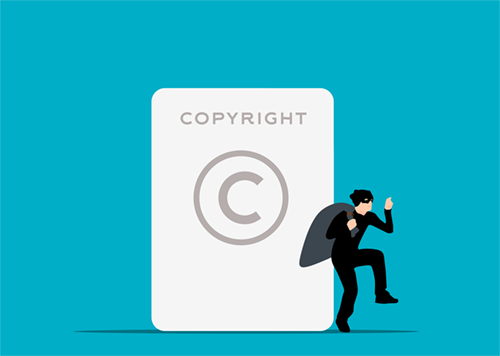- Autumn 2024
- Authorisation of infringement of copyright by indifference

Real Estate Tool Box Pty Limited v Campaigntrack Pty Ltd [2023] HCA 38
The High Court has unanimously allowed an appeal from the Full Federal Court which had held that the appellants had ‘authorised’ an infringement of copyright within the meaning of s 36 of the Copyright Act 1968 (Cth) (‘the Act’), by ‘indifference’. In so doing, the High Court has provided guidance on the circumstances which may constitute authorisation by indifference for the purposes of s 36.
Background
In 2016, the second respondent, Mr Semmens, a software developer, admitted to infringement of copyright in software called Process 55 (‘the first infringement’). The first infringement was not the subject of the proceedings. The first infringement occurred when Mr Semmens created a cloud‑based real estate marketing system called DreamDesk, which was licensed by the second appellant, Biggin & Scott Corporate Pty Ltd (‘Biggin & Scott’) from Dream Desk Pty Ltd (‘DDPL’), the third appellant. Before this, Biggin & Scott had used a competing marketing system, Campaigntrack.
Following the first infringement, Mr Meissner, the fourth appellant and a director of DDPL, sold DreamDesk to Campaigntrack Pty Ltd (‘Campaigntrack P/L’), the first respondent. Campaigntrack P/L purchased the rights in both DreamDesk and Process 55 in order ‘to shut down DreamDesk and persuade customers to move or return to Campaigntrack’: at [3], [15]– [16].
Rather than return to Campaigntrack, on 3 August 2016, Biggin & Scott instructed Mr Semmens to ‘build a web-to-print delivery system that does not breach any other companies’ IP [intellectual property] or ownership’, leading to Mr Semmens developing the Real Estate Tool Box software (‘Toolbox’): at [4], [17]. In September 2016, Mr Stoner and Ms Bartels, the fifth and sixth appellants and co-directors of Biggin & Scott, incorporated Real Estate Tool Box Pty Limited (‘RETB’), the first appellant, as the corporate trustee of a unit trust (‘the RETB Unit Trust’) apparently to own Toolbox: at [4], [7], [22].
Critically, Mr Stoner and Ms Bartels sought assurances from Mr Semmens that he had complied with the instructions not to infringe the ‘IP or ownership’ of any other company in creating Toolbox: at [5], [19]. Nonetheless, in developing Toolbox, Mr Semmens infringed the copyright of Campaigntrack P/L in DreamDesk (‘the second infringement’), which infringement was not in dispute before the High Court: at [5]–[6].
The appellants fell broadly into two groups: RETB, Biggin & Scott, Mr Stoner and Ms Bartels (‘the Biggin & Scott parties’) and DDPL and Mr Meissner (‘the DDPL parties’), with the conduct said to constitute authorisation of the second infringement by each group being different: at [6].
On 29 September 2016, Campaigntrack P/L’s solicitor wrote to Mr Meissner and DDPL saying that Campaigntrack P/L ‘had become aware of improper access and duplication of code’, but that it would extend the DreamDesk licence if DDPL provided relevant undertakings (‘the 29 September 2016 email’): at [26]–[27].
Significantly, both Mr Meissner and the Biggin & Scott parties (upon becoming aware of the request) promptly provided the undertakings sought: at [28]–[30]. Mr Semmens did not provide any undertakings, on which basis Campaigntrack P/L refused to extend the Biggin & Scott licence over DreamDesk beyond 10 October 2016. On 10 October 2016, Toolbox went live.
In November 2016, the Biggin & Scott parties and Campaigntrack P/L agreed that a computer forensic expert could inspect Toolbox to provide a preliminary report on whether intellectual property in DreamDesk had been infringed. The preliminary report concluded that it was ‘highly probable’ that it had, although it said the host servers also needed to be examined: at [37], [38].
Campaigntrack P/L’s solicitor then wrote to the Biggin & Scott parties’ solicitor asking that Toolbox be ‘shut down’, which Biggin & Scott refused to do. By June 2018, Biggin & Scott ceased using Toolbox.
Legislative framework
Section 36(1) of the Act relevantly provides that copyright is infringed including where a person ‘authorises the doing in Australia’ of an infringing act. Section 36(1A) mandates the considerations in determining authorisation:
(a) the extent (if any) of the person’s power to prevent the doing of the act concerned;
(b) the nature of any relationship existing between the person and the person who did the act concerned;
(c) whether the person took any reasonable steps to prevent or avoid the doing of the act, including whether the person complied with any relevant industry codes of practice.
‘Authorisation’ for the above purposes includes circumstances in which one person is so involved in the infringement that the infringer can be said to act with the ‘permission’ of the authorising person or to have been ‘sanction[ed], approve[d], [and] countenance[d]’ by the authorising person: at [63].
Findings in the Federal Court
At trial, Campaigntrack P/L alleged that both the Biggin & Scott parties and the DDPL parties authorised the infringing acts of Mr Semmens. However, Thawley J was not satisfied that any of the parties authorised any infringement of copyright.
In the Full Court, the majority (McElwaine J, Greenwood J substantially agreeing) concluded that the appellants had authorised Mr Semmens’ infringement from 29 September 2016, given that from this date they were on notice of the asserted infringement and Mr Semmens had failed to provide the undertakings sought.
McElwaine J relevantly observed (at [333]) that a ‘reasonable person’ in the position of each of the respondents ‘knowing that Mr Semmens had failed, for whatever reason to give the requested undertakings, in my view ought to have made genuine and specific inquiry from Mr Semmens as to why he had not given the undertakings and if it was because the copying allegations were true’.
Reasoning in the High Court
The High Court (Gageler CJ, Gordon, Edelman, Steward and Jagot JJ) unanimously allowed the appellants’ appeal, examining cases considering authorisation by indifference which underscored that the power to prevent an infringement is key: Performing Right Society Ltd v Cyril Theatrical Syndicate Ltd [1924] 1 KB 1, Adelaide Corporation v Australasian Performing Right Association Ltd (1928) 40 CLR 481, University of New South Wales v Moorhouse (1975) 133 CLR 1 and Roadshow Films Pty Ltd v iiNet Ltd [No 2] (2012) 248 CLR 42.
Distilling the principles from the above authorities, the High Court held (at [77]) that:
The quality of the indifference, and the nature of the relationship between the infringer and the alleged authoriser, must be such as to justify a conclusion that there was sufficient involvement in the infringement as to amount to authorisation of the acts constituting the breach of copyright … The central factors to consider will be those matters in s 36(1A) … That necessarily requires consideration of whether a person knows or has reason to anticipate or suspect an infringing act is occurring or is likely to occur.
The High Court held further that ‘authorisation by indifference requires findings, supported by evidence, that the person was in a position and had knowledge of facts, matters and circumstances sufficient to give rise to a duty to take reasonable steps to avoid or prevent the doing of an act by another person, or else be liable for the act of that person’: at [88].
In the present case, the High Court concluded that none of the appellants, ‘having engaged Mr Semmens as the third-party developer with the expertise that they lacked, and having instructed him specifically not to infringe copyright’, authorised the infringement: at [78].
Of significance, the High Court observed that ‘it bears repeating that none of the primary findings made about [the appellants] were challenged on appeal to the Full Court or to this court …’: at [79].
The High Court found that in response to the 29 September 2016 email, Biggin & Scott promptly provided undertakings in the terms requested. Mr Semmens’ failure to provide undertakings was of limited significance because it was never put to any witness that the Biggin & Scott undertakings were not genuinely given: at [83]. The Biggin & Scott parties permitted the preliminary forensic investigation, the resultant preliminary report was inconclusive, and it was not put to witnesses in cross-examination that the report had changed matters: at [85].
In respect of the DDPL parties, there could be no finding that Mr Meissner knew or ought to have known of Mr Semmens’ second infringement, given Mr Meissner was earlier shocked at the first infringement and was overseas for a large part of the time, although he did have some reason to suspect Mr Semmens’ actions after 29 September 2016: at [92], [96]. There was no evidence that the DDPL parties would profit from the commercial exploitation of Toolbox, given they were not unit holders in the RETB Unit Trust nor parties to any arrangement. Moreover, Mr Meissner promptly gave the undertakings sought in response to the 29 September 2016 email.
Accordingly, the High Court concluded that there was no omission by any of the appellants to take reasonable steps after 29 September 2016 to prevent or avoid the infringing acts, a finding said to result largely or wholly from the nature of the case at first instance: at [83], [89], [96]. BN

